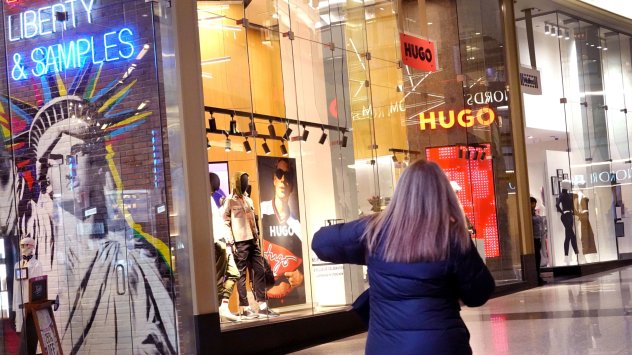
By Veselina Spasova
For God's sake, bros, buy! With this rousing appeal, many marketers would approach their customers in the hope of breaking through the boundary with the consumer and steering them straight to purchase their products. Often, that's what all the millions of signs surrounding us in physical stores, billboards on the street, or advertisements on the internet sound like with offers like “Bargain," "Best price," "You'll drop two sizes in just 21 days", " Right today you have the incredible opportunity to buy bargain the best cleaning appliance ever”…
The shopping fever inevitably passes under the hood of delusion. Customer manipulation, whether in the form of a thinly drawn red line or a stated one, is present in almost every advertising slogan and marketing campaign. Despite all the wonderful buying calls, experts advise consumers to be cautious and, with an approach, put their money into a particular purchase. For example, traditionally, around days such as the gaining popularity of Black Friday, many retail offers are accompanied by misleading tactics aimed solely at finalizing the consumer's choice with a purchase. Often this is true even for goods one doesn't need but which one does, misled by a widespread trick. However, any unethical or illegal practice should not fall under the strategies heading. But it is also a fact that salespeople and marketers use daily techniques to boost their sales.
The truth is that businesses operate in a very competitive environment. Everyone is fighting for consumer attention, and the direction is often one - to provoke a specific action - a sale. So believes digital marketing consultant Etienne Yanev, with over 12 years of experience. "Whether it's a purchase, website visit, newsletter sign-up, or something else, marketers always think several moves ahead. In this line of thought, manipulation is rooted in how businesses communicate with us - especially online," the marketer points out.
Marketers want to intrigue consumers with their ads, so they reach the shopping cart with minimal effort and continue wooing us with more products. That is the so-called customer journey, which is increasingly accessible for analysis thanks to digital marketing. The trend in recent years proves the opinion of many experts that marketers are getting better at persuasive communication. Strategies in this respect are varied. Particularly on the Internet, the techniques are easily discoverable. And they are all usually based on some prejudice.
Let's look at one particular example - the so-called "FOMO" technique – an acronym of "fear of missing out.“ Using this trick, the offer is presented in a manner so that it only applies here and now; we have no other alternative. A similar tactics follows the so-called 'scarcity effect.‘ We've all seen slogans like 'will sell until stocks last,‘ '5 units left, or 'offer valid until the end of the day.‘ These examples create a sense of urgency; we must buy now because tomorrow may already be too late. And the techniques don't stop there! Another tactic is the " Others do it, so do it too" principle. We usually have a purely human tendency to trust businesses when we see many other people buying from them too. It is called "herd mentality" and works extremely well within customer communications.
Yet another practice of manipulation is the distribution of limited-period offers. Indeed, such proposals do not terminate in the specified time span. This is a typical example of fake notifications claiming a product is almost sold out Timers that urge shoppers to complete a purchase before their session expires are bootleg parades to attract customers traffic.
Such machinations allow many retailers to exploit consumers' emotions and insecurities. The marketer is trying to influence the consumer to make a decision that benefits the business, not the person. The purpose of these models in the context of shopping is to get the customer to buy a certain number of things, generate traffic and hence increase the advertising popularity of the products on offer. The three times measures, once overhead maxim applies full force to the episodes where a shopper is driven to the latest bargain.
To have a lasting effect on consumers, a technique takes time. How big a change the consumer is looking for and how important a decision they need to be persuaded to make at the moment depends on how long it will take for the manipulative strategy to work. "Tricks must be well planned because nobody likes to be manipulated. If a salesperson focuses more on manipulation than on customer satisfaction, they risk of being revealed and decoded. The truth is that there are many consumers well-informed about these sales practices and thus they avoid them intentionally. In other cases, the customer is extremely loyal to the businesses and services they have already benefited from until this point and thus is categorically unwilling to look around for alternatives. This seems to further make them blind to manipulation of any type, “ says Etienne Yanev.
Although persuasive tricks are often viewed negatively, they can be very curious. An example is the technique of the effect of messy clothes. It targets those piles in shops that are deliberately left unsorted so that the shopper can come across his garment at the bottom and feel like a discoverer. On the other hand according to the within-reach effect the more pricey clothes are displayed at eye level at the expense of the more reasonably priced products.
Among the most intriguing tricks is the background music – calm, slow, quiet melodies that urges the customer to shop more. On the other hand, the end-of-offer countdown timer proves that the pain of losing something is psychologically stronger than the gain. Every shopper has encountered the offer of free shipping on all sorts of internet offers. Well, this is a trick of the salespeople’s persuasive selling strategy. The list of examples of manipulative techniques is virtually limitless. Most importantly, though, no strategy will work if used purposefully and without the customer in mind.
Customers usually have specific customer needs on several human levels - emotional, functional, or social. However, the marketer must not exploit this maliciously, lest they abuse the customer's influence and trust. According to Bogomil Nikolov, Executive Director of the Bulgarian National Association of Active Consumers, the situation with unfair commercial practices is complex. The procedure is long and cumbersome, and the fines are low and disproportionate and do not have a good effect. "Our view is that fines should be based on the principle of competition law, where they are indexed as a percentage of turnover. The same logic should be applied here," the expert said.
However, there is no one-size-fits-all formula on how consumers can protect themselves from such manipulative techniques. The best strategy for the customer is to be skeptical within the bounds of normal and question any persuasive advertising. The principle "if something sounds too good to be true, it probably isn't “ applies full force to marketing and commerce.
It is important for customers not to be impulsive and to approach offers cautiously because manipulative and unethical practices are manifold and lurking everywhere. Among the biggest offenders are the mobile operators, who are, understandably, the most sanctioned ones. Most often, commercial manipulation is linked to the price of a service or product. Every trick makes the customer think that the amount of money he might be willing to spend is a bargain, but it turns out to be just the opposite.
The other major set of manipulative strategies is used in advertising product properties. The information provided makes the customer assume that the product has certain functionalities that it fails to cover. Often marketers try to escape liability after the sale has been made. Among the crudest forms of manipulation are outright false product claims. To put it another way, the salesman uses the principles of deceit to sell his product. " As a rule, these practices involve two things - either fear or temptation, greed. One doesn't have time to mull it over and says to himself that a certain commodity is very discounted, very lucrative, and immediately rushes to buy it, making an impulsive and rash purchase decision," says Bogomil Nikolov.
Ultimately, it is important to make informed choices to prevent customers from falling into the trap of commercial manipulation. If buyers can weed out the sound offer from the pure attempt to influence, they will not be vulnerable to such sales practices.
THE BOTTOM LINE Marketers want to intrigue consumers with their advertisements so they reach the shopping cart with minimal effort, and then continue to woo us with more products.



